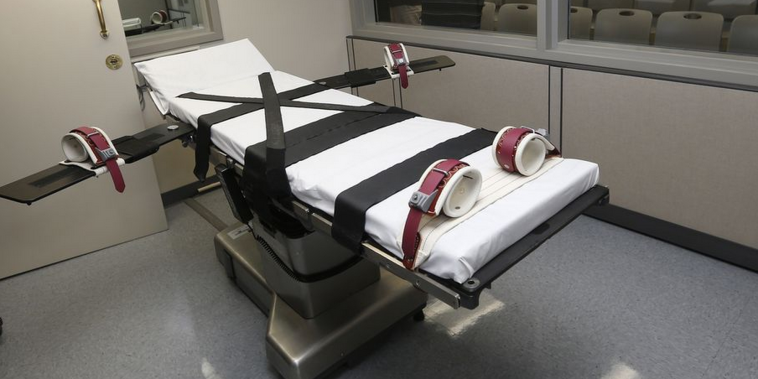McALESTER, Okla. — Oklahoma’s last execution went so badly that the state tried to cancel it before it was over. With the inmate writhing while the lethal drugs seeped into his body, his executioners drew the viewing gallery curtains, concealing what the warden later described as “a bloody mess.”
Videos By Rare
The botched execution of Clayton Lockett in April and other troubling ones this year in Ohio and Arizona gave capital punishment opponents a flicker of hope that areas of the country that most enthusiastically support the death penalty might have a change of heart. They didn’t.
Although Gov. Mary Fallin suspended further executions so that Lockett’s death and Oklahoma’s methods could be reviewed, the state held what amounted to a ribbon-cutting ceremony for its overhauled death chamber only months later and is scheduled to resume killing inmates in mid-January. And rather than causing states to question whether capital punishment is just or worth the risk of subjecting someone to a potentially agonizing death, the prolonged executions and problems states have had securing lethal injection drugs have led them to explore new, old and more efficient ways of killing, including gassing inmates.
“I think we had a little flash of hope that it would help our cause, but all it did was generate a lot of conversation about it,” said Lydia Polley, a longtime member of the Oklahoma Coalition to Abolish the Death Penalty. “It just led to people thinking of better ways to kill them.”
Lockett’s execution did little or nothing to dampen support for the death penalty in deeply conservative Oklahoma, which has killed more inmates than any other state except Texas since the 1976 reinstatement of the death penalty. In October, officials gave media tours of the renovated execution unit at the Oklahoma State Penitentiary, which got a $104,000 overhaul after Lockett’s death and now stands in sharp contrast to the rest of the shabby, 106-year-old facility.
Not content with just the upgrades to the prison and lethal injection equipment, though, Oklahoma’s Republican-led House conducted a study on the use of nitrogen gas to execute inmates and is expected to consider legislation early next year that would make Oklahoma the first state to adopt hypoxia by gas — the forced deprivation of oxygen — as a legal execution method.
Other conservative states also are exploring alternatives to lethal injection because of the problems securing the drugs. U.S. states have had to buy made-to-order execution drugs from compounding pharmacies in recent years because the pharmaceutical companies they used to buy their drugs from refuse to sell them for use in lethal injections.
Tennessee passed a law this year to reinstate the electric chair if it can’t get lethal injection drugs and Utah is considering bringing back the firing squad.
Oklahoma has executed 194 inmates since achieving statehood in 1907, including one by hanging, 82 by electrocution and 111 by lethal injection, according to state prison records. But the use of the death penalty was common in the territory long before that. U.S. District Judge Isaac Parker, who operated out of nearby Fort Smith, earned a reputation as the “Hanging Judge” of the old West and presided over certain crimes committed in Indian territory.
“To me it’s a reflection of our frontier culture,” said Oklahoma historian Bob Blackburn. “Violence is a part of frontier culture, and vigilante justice has always been a strong element of our history.”
Ralph Shortey, a Republican state senator from Oklahoma City who is pushing for Oklahoma to adopt alternative execution methods to lethal injection, estimates that 90 percent of his constituents strongly support the death penalty, despite what happened to Lockett.
“The average Oklahoman is saying he got exactly what he deserves,” Shortey said. “A lot of people think they should suffer even more than they do. They think the lethal injection is too easy for them.”
Oklahoma prison officials say they’ve secured the drugs they need to execute the next four inmates — the first is scheduled for Jan. 15 — unless a federal appeals court stands in their way. The inmates are trying to stop their executions, arguing that the state would essentially be experimenting on them by injecting them with unproven and untested drugs and violating the constitutional ban on cruel and unusual punishment.
“Just because you say you’ve renovated the execution chamber, doesn’t mean a judge will be satisfied that you’ve identified the problems and have a strong guarantee they won’t happen again,” said Richard Dieter, the director of the Death Penalty Information Center, a Washington-based advocacy group that opposes capital punishment. “They may be optimistic about being able to go forward, but I think there are still a lot of questions out there.”

